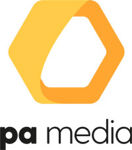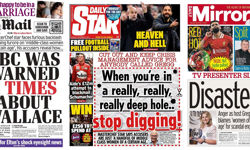Q. What are the first and last things you read each day?
Brian Aitkin, Editor, The Journal (Newcastle): “First thing: either Twitter or The Journal e-edition. Last thing: Twitter.”
Richard Butt, Editor, Isle of Man Examiner, Manx Independent and Isle of Man Courier: “I wake up to Radio 4, and switch to Manx Radio for 7am news. Eating breakfast, I make sure our embargoed stories have gone online, look at our Twitter feed and Facebook page. I always look at Sky News's website to see the national front pages. I spend the day reading emails, reporters' stories and unfathomable things sent from people in group. Later, I usually spend an hour or two online at home. I'm trying to stop that.”
Mike Gilson, Editor, Belfast Telegraph: “First things: BBC, Mail, Guardian, Bel Tel on iPad, and Radio 4 Today. Last things: Bel Tel web and electronic pages.”
Rob Irvine, Editor, Manchester Evening News: “First – iPhone, last – a book.”
Judi Kisiel, Editor, Weston, Worle & Somerset Mercury: “The first thing is my iPad. I’ll quickly scan the Daily Mail, the Mercury website and BBC News to check anything I may have missed locally. While I repeat this behaviour throughout the evening, the very last thing I read will usually be a novel.”
Gary Lawrence, Editor, Swindon Advertiser, Wiltshire Gazette & Herald, and Wiltshire Times: “First thing: today’s Advertiser. Last thing: iPad.”
Geoff Martin, Editor, Hampstead and Highgate Express: “If it’s Thursday, our publication day, I read the Ham&High and associated weeklies. On other days, I pick up the daily paper with the strongest front page story.”
Andrew Mosley, Editor, Rotherham Advertiser: “The first things are my Twitter feed to check if there’s anything relevant from police, council, local politicians, etc, then BBC News and our own website, and a flick through morning papers.”
Gary Phelps, Editor, Tamworth Herald and Sutton Coldfield Observer: “My iPad is the first and last thing under my gaze each day.”
Ian Savage, Editor-in-Chief, The Bolton News and Bury Times Group: “iPad… for BBC, Guardian and the Bolton News / Bury Times. Mix of national and world news to make sure my websites are up to date. Exactly the same last thing at night.”
Neil Speight, Editor, Essex Enquirer series: “I browse the daily papers at work, including the Basildon Echo and other rivals. When not in the office I generally pick up the Daily Mail – they’ve a good spread of freelancers across our area and I really like their sport!”
Neil White, Editor, Derby Telegraph: “First thing: Twitter, Facebook, derbytelegraph.co.uk and Sky News. Last thing: derbytelegraph.co.uk, Facebook, Twitter.”
Q. What proportions of your own daily news diet are in printed, broadcast and digital forms?
Aitkin: “Around 80% electronic – but the vast majority links to printed articles. I listen to Radio 5Live to and from work and watch very little TV news.”
Butt: “10% print, 40% broadcast, 50% digital.”
Gilson: “I’m still weighted to the printed word but digital is eating into it. Don’t listen to much broadcast – local stuff is unwatchable / unlistenable.”
Irvine: “50% print, 20% broadcast, 30% digital.”
Kisiel: “30% print, 10% broadcast, 60% digital.”
Lawrence: “80:20 in favour of digital.”
Phelps: “I’d imagine each day I spend: 45 minutes TV news, largely BBC Breakfast and Sky Sports News; 40 minutes Radio 4 in the car; 30 minutes print; and maybe an hour online.”
Martin: “About 50% print, 25% broadcast, 25% digital.”
Mosley: “About 40% print, 20% broadcast, 40% digital.
Speight: “50% print, 10% broadcast, 40% online.”
White: “10% print, 2% TV, 8% radio, at least 80% online.”
Q. What proportions of editorial resource do you currently employ on print and digital journalism? How much do you think this will change in the next five years?
Butt: “A lot is published print and online. So, common 65%, print-only 25%, digital-only 10%. It'll become common 65%, print-only 15%, digital-only 20%.”
Gilson: “All my staff write in-depth, largely exclusive treatments of Northern Irish stories, published across all platforms. We have a team of ‘curators’, but the key is good journalists. If people are going to pay for my content, it has to be old fashioned ‘stone me’ stories first.”
Irvine: “80:20 [print-led, changing to] 65:35.”
Kisiel: “We expect all our reporters to be fully au fait with both. The specialist needs of changing online opportunities means we sometimes appoint staff to tasks in a way which we don’t often need to for print.
“I hope they won’t change too much. We’re managing things in the right way by training our people to produce print and digital complementing one another. Fresh opportunities online shouldn’t mean we cut corners or scale down our print offering, and I see little or no value in separating the editorial team.”
Lawrence: “90:10 print-led, [will become] closer to 50:50.”
Martin: “About 25% [digital] sounds right. I see a gradual increase but it’s a difficult comparison as the vast majority of stories are written with print in mind, then adapted for digital. After deadlines, a lot of stories go straight to digital and are updated as the week progresses for digital and print.”
Mosley: “We are pretty much all print, with everyone dipping into the website, Twitter, etc, so I’ll go for 80% print. This will move towards digital, though probably less than dailies.”
Phelps: “More time is spent preparing printed products – we have large weekly papers – however, the whole team is engaging more and more with digital.”
Savage: “The bulk is devoted to print. However, all journalists spend a good proportion of time tweeting and uploading breaking news, and we live blog from council meetings. Potentially there’ll be more emphasis on digital… As more dailies become weekly, I think digital can fill that gap. If regionals become more lucrative online with more advertising and / or ‘pay for content’ initiatives, there’d be a need for more in-depth, or new, digital content.”
Speight: “About 20% online – someone dedicated to keeping the website updated.”
White: “75/25% towards print, reflecting revenues, [changing to] more like 50/50.”
Q. How much editorial and photography is currently ‘user-generated content’ (UGC)? Will this change in the next five years?
Aitkin: “The Journal already has lots of UGC through submitted columns from politicians and business people. I'd like to see this increase as papers like mine become even more agenda-setting, issued-based and platforms for debates.”
Butt: “Contributed copy has always been the lifeblood of local newspapers. Marketeers have just given it a fancy name. Sport is about 40% contributed. News 10%. Photography 10%. More photography, especially, is coming. It's free and easier to get.”
Gilson: “Not that much yet. Let’s be honest, most is poor. I can’t get excited about Mrs Miggins writing about her needlework circle and then reading it back to herself online. She’s got Facebook for that. We have two million unique users a month on our website and 16,000 comments. I suspect we’ll continue to roll out ‘channels of interest’, platforms people can respond and contribute to but which have journalism at their core. I believe in corrections.”
Irvine: “Editorial: MEN 5%, paid weeklies 20%, free weeklies 40%. Photos: MEN 10%, paid weeklies 40%, free weeklies 75%. [This will become] 5% to 10% more.”
Kisiel: “Very little copy, but quite a lot of photographs. We quote from reader opinions and contributions, and run a weekly Hot Topic in paper and online with reader comments from our website, Facebook, Twitter and email. But this is topped and tailed by a reporter. We receive very few reader-submitted stories, although we run a page of local clubs and societies reports. Photo-wise, we often feature online galleries from big events, and are regularly able to divide it half-and-half between ‘our pictures’ and ‘your pictures’.
“UGC is valuable for harder, more immediate news stories – accidents, fires, etc – particularly online. There’s still a marked difference in quality between submitted and staff pictures. Improved camera quality, more widespread online access, and the growing knowledge that these contributions are valued has led to huge growth.”
Lawrence: “About 10%. It will increase but I’m not in favour of opening the floodgates. I still believe reporters ought to report. There’s plenty of room for reader interactivity through comments and blogs.”
Martin: “About 10%, if you include things like our Viewpoints pages. We occasionally run special supplements written entirely by readers. There’s been a sizeable increase in the number of story leads we receive from social media.”
Mosley: “We use Twitter and Facebook for tips and comments, plus reader pictures and news pictures when they’re sent in. All our district pages (four to six a week) are provided by district correspondents. I think this will increase. We’re introducing a team of young correspondents to change how community news and opinion is used in the paper, to engage with a different generation of potential readers.”
Phelps: “We’ve had a large amount of UGC for years, from traditional vicars’ columns to fire service call-out logs. Some weeks, with UGC-led supplements, we probably carry more than 20%. I don’t expect to see UGC necessarily increase in our printed products. I do expect an explosion online. Local World has talked about a ‘twenty-fold’ increase in online content, which could only be achieved through ‘curated content’. The challenge is providing platforms that encourage readers to engage. The best could then find its way into print.”
Savage: “Probably 15% UGC; more like 30% for photography. Smart phones, huge improvements in camera quality and the number of people who have them means there’s a pretty good selection of ‘reader’ photos. UGC has its place, but to be compelling and meaningful, it needs to be well managed. It’s inevitable UGC will increase. As long as it’s effectively managed, edited and used that’s no bad thing. There needs to be a difference between what a local newspaper website will publish, as opposed to the gossip, speculation, rumour, abuse and lies that often populate Facebook, Twitter and unregulated blogs… The newspaper brand needs to retain credibility, authority and a reputation for expertise. Vital note: relevant and good quality UGC requires resource to manage.”
Speight: “About 40%, though much topped and tailed by staff. I’m sure it will increase, though most online. I don’t see the size of the print product going up to match the increase in copy, unless there’s a slump in newsprint prices!”
White: “About 20%, [changing to] about 75%.”
Q. If digital access remains largely free, how can newspaper brands continue to resource high-quality journalism?
Aitkin: “Tablets are convenient to access and read printed products, a means of getting more ROP advertising seen, thus increasing the potential to grow that revenue when traditional print ad revenues are falling.”
Butt: “More free registration needed to see stories, allowing more data capture to sell on to advertisers. Higher cover prices to compensate for the loss of casual readers.”
Gilson: “I don’t think it can remain free. We have to find what’s unique, make sure it’s compelling and then charge for it.”
Irvine: “Multimedia approach – free and paid print offering whilst developing online brands which are seeing revenues grow in line with audience.”
Kisiel: “To survive, traditional media outlets need to continue to build their brand on providing solid and reputable content, researched and written by trained journalists. Anyone can churn out their own form of ‘news’, but the credibility which we believe our name guarantees will keep readers turning to us, and ensure the longevity of our brand.”
Martin: “The obvious way is to increase online advertising and develop digital areas that attract revenue, perhaps specialist streams, eg, property. If people would pay to read newspapers online all the industry’s troubles would be over, but smarter people than me are struggling to make that work. It’s still the Holy Grail.”
Mosley: “More advertising on websites, but this comes with the problem of irritating readers. Papers will have to increase their cover price. For too long newspapers have been frightened to increase prices, facing a backlash from readers used to buying a relatively cheap product. We regularly produce a 120-page paper for 60p, alongside two frees. We have to make sure sales and advertising bring in enough to resource high-quality journalism, and that involves commercially-led supplements that add reader value.”
Phelps: “We’ve not only got to monetise online output, we’ve got to protect and nurture traditional printed products. We need to build big enough online audiences to attract significant digital revenue, while keeping our newspapers healthy, vibrant and relevant, providing differing content and a different user experience under one brand.”
Savage: “They need to invest in the editorial department. Newspaper brands need to ‘sell’ their products as packages – print, website, app and niche products – so readers get everything for a certain cost. Readers need educating (and this IS tough!) that good quality, local journalism costs a lot of money.”
Speight: “Just because anyone can set up a blog and write rubbish, it doesn’t mean we should! Pay walls can work, but only if the content is good enough. Quality will always count.”












